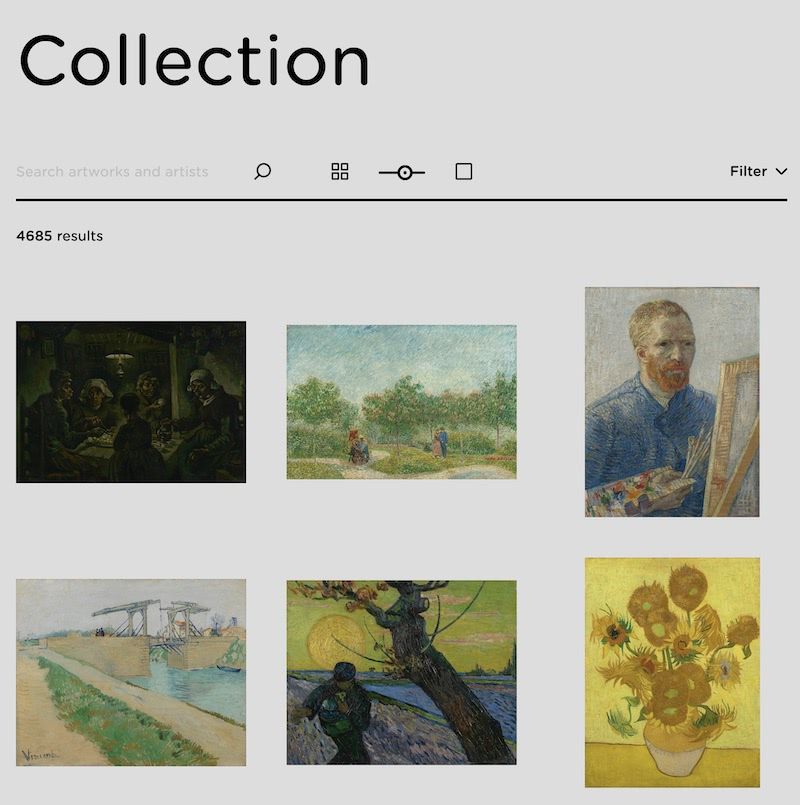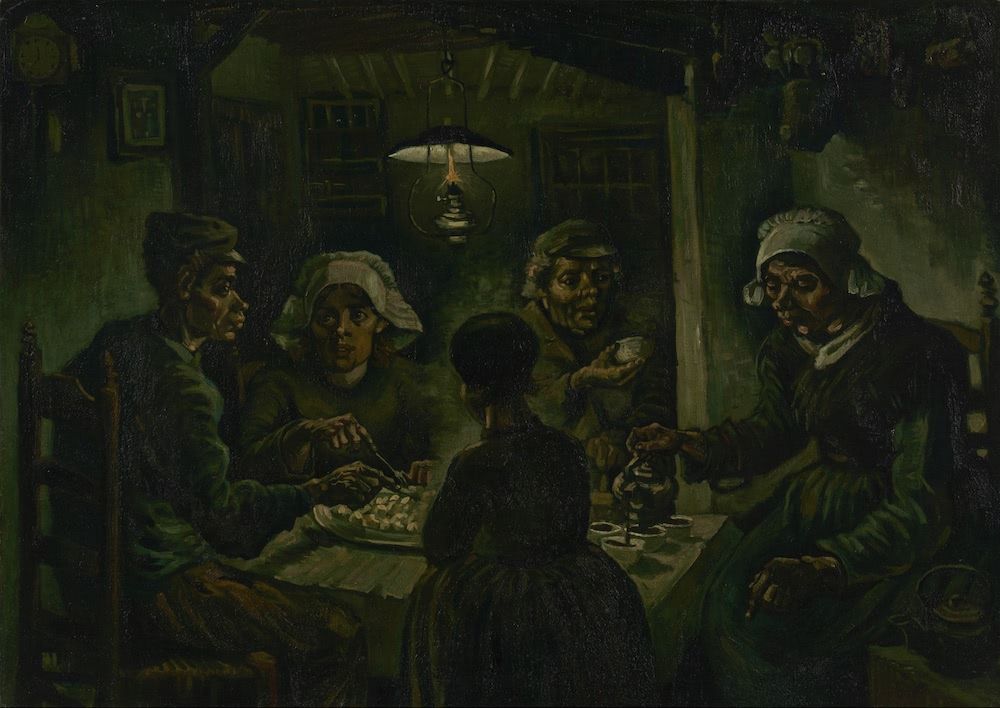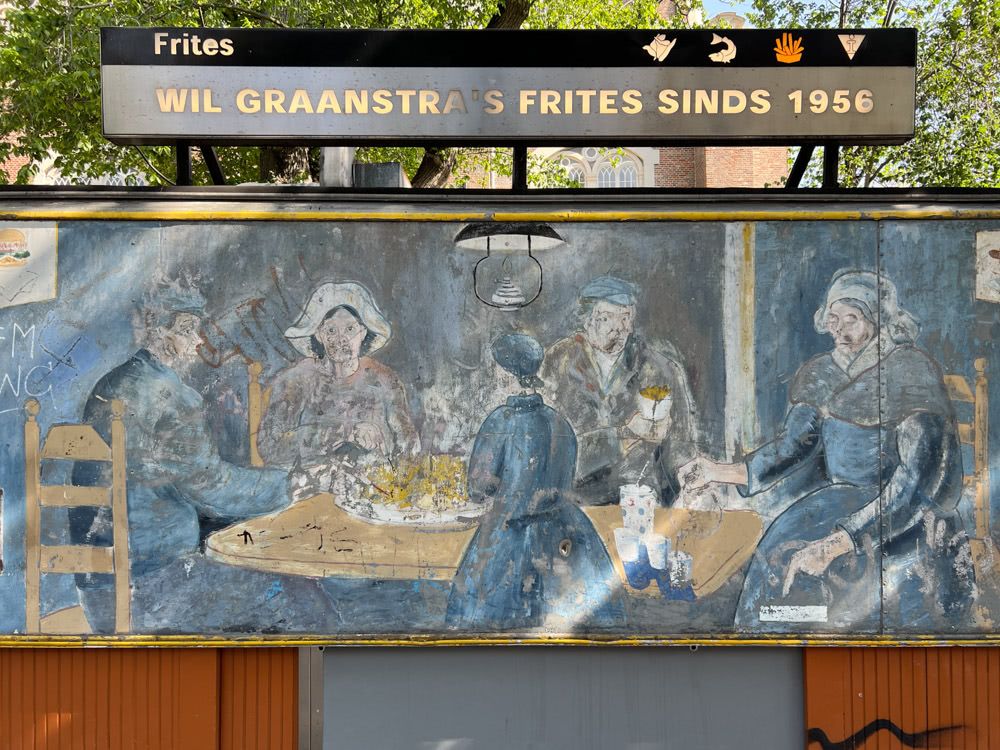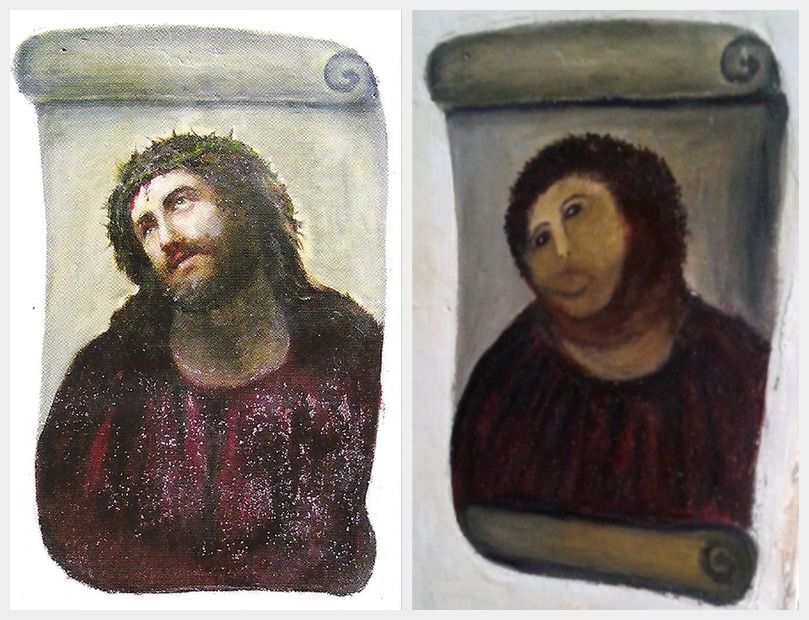Van Gogh’s Potato Eaters
The Potato Eaters is the first painting that appears in the online collection of the Van Gogh Museum’s official web-site. At first I thought that the paintings must’ve been listed alphabetically by title. The painting’s Dutch title is “De Aardappeleters”1. “De” (like other articles) is typically ignored when ranking titles of works and the “Aa” of Aardappeleters is pretty hard to beat when ranking alphabetically. But then you look at works listed at positions 2 and 3 - “Tuin met geliefden” (Garden with courting couples) and “Zelfportret als schilder” (Self-portrait as a painter) respectively, it’s obvious that unless Van Gogh’s entire oeuvre comprises of 3 paintings, the ranking is not alphabetical. The order is not chronological either. There must be some sort of curation at play here.
 Van Gogh Museum - the online collection page
Van Gogh Museum - the online collection page
The Potato Eaters is an odd choice. The palette is dark2, which Van Gogh himself described as “something like the colour of a really dusty potato, unpeeled of course”. And while the subject is just an ordinary dinner scene of 19th century peasant life, meaning there isn’t anything particularly sad about it, looking at it at the museum always puts me in a pensive mood.
 The Potato Eaters
The Potato Eaters
My past jobs required me to work from offices that are in Amsterdam’s city centre - a mere 3 to 4 km from our home. I did not always take the most efficient route or mode of transport for getting to work. My morning commute would often mean walking at a comfortable pace through Amsterdam’s inner canal ring. Right behind Westerkerk, there is a stall that sells tourists’ favourite delicacy - potato fries. One day while walking past it, I realised that it had a replica of the Potato Eaters painted on its shutter! Except, everyone in this version of the painting is eating potato fries. The old woman in the right is still pouring coffee - albeit into paper cups. The aspect ratio of the shop’s shutter is different from the original so whomever painted it had to space the subjects out a bit. The choice of colour palette tries to be faithful to the original, at least in luminosity and saturation if not in hue. Time and weather seemed to have endowed it with the pathos of the original.
 The Potato Eaters - french fries edition
The Potato Eaters - french fries edition
The appropriation of Van Gogh’s The Potato Eaters by this stall made me chuckle.
A few weeks later as I was walking past this stall again, I noticed that the painting on its shutter had been “re-touched”. Sadly, it looked more like something a primary school student learning to use Microsoft Paint would create than parody of a famous work by Van Gogh. A few other details had changed too. The woman in the right is no longer pouring coffee but is rather dipping a fry into mustard sauce.
 The Potato Eaters - french fries edition (post restoration)
The Potato Eaters - french fries edition (post restoration)
It reminded me of the incident in 2012 when an octogenarian amateur artist tried to restore a fresco of Jesus (Ecce Homo) in a Church in Spain and botched it up completely3.
 Ecce homo
Ecce homo
I am really not sure if this version of The Potato Eaters should make me happy or sad. I can now barely connect it to the original!
In line with the Dutch language’s propensity to concatenate words to make new ones.↩︎
and perhaps rendered even duller than Van Gogh originally intended as tends to happen to pigments from those times.↩︎
from the wikipedia page: While press accounts agree that the original painting was artistically unremarkable, its current fame derives from a good faith attempt to restore the fresco by Cecilia Giménez, an untrained amateur artist, in 2012. The intervention transformed the painting and made it look similar to a monkey, and for this reason it is sometimes referred to as Ecce Mono (roughly Behold the Monkey; mono translates to monkey in Spanish).↩︎